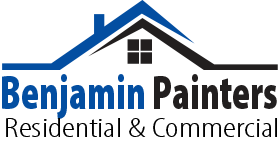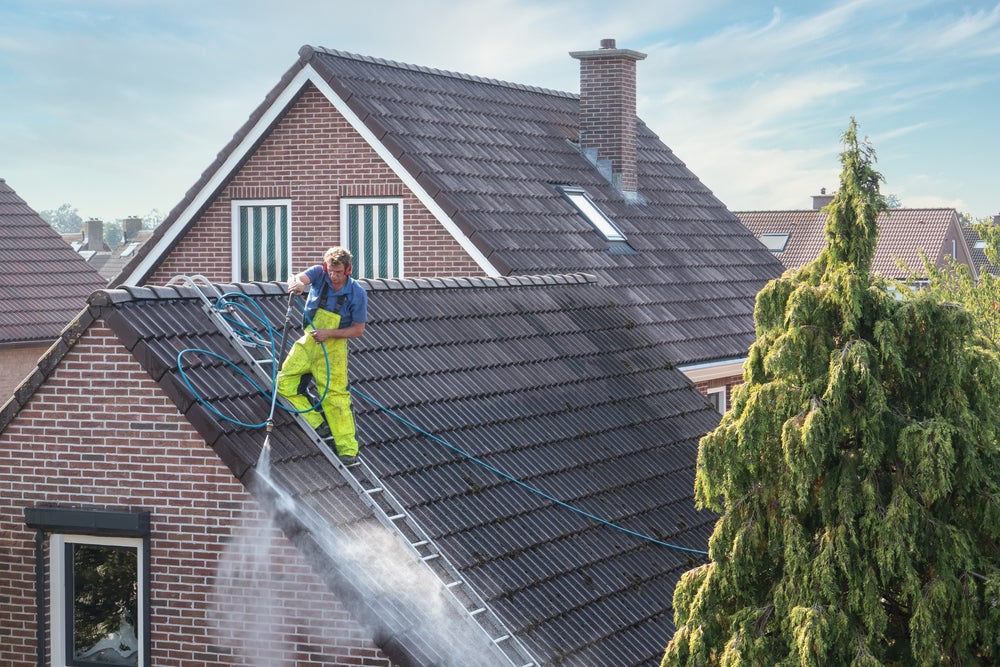Pressure washing is one of the quickest ways to brighten and clean any exterior surface. Pressure washing will remove dirt, mildew, and organic growth correctly and with the proper solution.
Let’s explore the secrets of washing thoroughly and defuse the pretense of the advertised low-cost rinses with little long-term effect.
Table of Contents
How Much Pressure Washing Costs
Professional pressure washing prices will range from 8 – 25 cents a square foot depending on which part of the US you live.
The surface you are having washed and the accessibility of that area will largely influence the overall price of the service.
Areas on the second and third floors will cost twice as much to pressure wash as those on the ground level.
How to Use A Pressure Washer
A small electric sprayer will be enough if you wash low areas and don’t need heavy pressure. Higher pressure will be required for heavy cleaning and chemical projection at high levels.
Gallon per minute is another factor when considering pressure washer usage.
When connecting a pressure washer to your home, ensure your exterior faucet releases enough water for the pressure washer to run. Smaller hoses will also limit water flow.
Priming the line by pressing the trigger to let all air out of the line will prevent air from getting into the pressure washers pump. When the air gets into the line, the machine will lose pressure.
Press the choke button if the machine runs on gas. Gas-powered washers will either have an automatic start switch or a pull cord to start.
Once the engine runs, wait 10 seconds, then put the choke button into full throttle.
Best Standard Pressure Washing Nozzles to Use
The device that controls water flow is called the gun. Removable tips that control the water flow are at the end of the wand.
Each tip’s color defines how much resistance or pressure is released.
- Red Tip: This tip is a 0-degree tip and releases the most direct pressure. This tip is good for washing at increased distances.
- Yellow Tip: This tip releases water at a 15-degree rate, allowing a marginal fan width instead of a direct stream of water. This tip performs well for up close high-pressure cleaning.
- Green Tip: Perfect for rinsing areas from afar and shoots water at 25 degrees, allowing for an even wider fan.
- White Tip: Jumping to a 40-degree super wide fan, this tip is best for delicate surfaces when sprayed at a distance.
Jet & Chemical Nozzles
Jet nozzles transfer a cleaning mixture into the water within the line from the end of the wand. Although, the solution can also be fed from the pressure washers pump.
Jet and projectile tips make applying cleaning agents efficient, but they require powerful machines that generate high pressure to work correctly.
A jet tip is ideal for home or commercial pressure washing at high distances. The standard black spray tip is for lower surfaces requiring less direct pressure.
Surface Cleaners
If you want your driveway, walkways, or other exterior horizontal masonry surfaces cleaned, surface cleaners use less water and take less time.
For surfaces with multiple years of mold and mildew growth is best to use a surface cleaner in conjunction with a cleaning solution.
House Washing
House washing should be done annually and is a must before painting a home’s exterior.
Sodium hydrochloride or hypochlorite is the main ingredient in bleach and is a significant proponent of professional exterior house washing.
Dirty surfaces require a higher bleach-to-water ratio and could involve Trisodium Phosphate and soap.
Professional home washing involves a low-pressure rinse killing all organic growth. All window screens should be removed to promote cleaner window glass.
Window sills, especially at high levels, may retain minor dirt and must be washed by hand.
Applying high pressure to these areas will lead to leaks and window damage, which could stain carpets or hardwood flooring, and should be avoided.
Window Cleaning & Pressure Washing
Window cleaning is an additional step and a service apart from home pressure washing.
Windows on the sunny side of your home could suffer from water spots due to direct heat and sunlight during pressure washing.
Deck Washing vs. Restoration
Deck washing should occur every 12 – 18 months, regardless of the surface. Wood surfaces will require cleaning solutions and light water pressure.
Deck restoration for treated lumber often involves removing a thin layer of degraded wood to unveil the brighter-colored wood below the surface.
Removing the layer is usually done by pressure washing or sanding.
Restoring IPE is an entirely different process.
If you have paid for a deck staining service, a low-pressure rinse killing all organic growth is standard before initiating the process, and blasting is not needed for routine staining.
Driveway Washing
Pressure washing driveways requires a machine of 2500 PSI or more. Otherwise, the process will be slow, and the surface will not be cleaned to its full potential.
Roof-&-Driveway-Cleaning
Surface cleaners are best for cleaning driveways. If you pay to have your driveway cleaned, you can expect to pay 1- $2 per square foot or more.
Roof Washing
Roof washing will clear shingles or slate from mold or mildew when using a proper blend of cleaning solutions.
The roof should be cool and not in direct sunlight during application.
Moderate temperatures will allow the cleaning solution to set longer, staying activated, ultimately cleaning the roof better using fewer chemicals.
Once the black or green roof streaks are cleaned and removed, the roof can be rinsed with a high water flow.
What it Means to Blast A Surface
Blasting refers to the highest pressure at a close distance. Blasting with high-powered machines takes longer and will remove surface layers from brick, concrete, wood, and painted surfaces.
Blasting requires experience, skill, and safety equipment. Pressure washing a high pressure can cause bodily injury and property damage.
Turbo Nozzle
The best tip for blasting large surfaces is a turbo nozzle. This device uses an isolating zero-degree tip.
Since the tip spins, it covers more area and loosens surface debris faster and more effectively than any handheld tip.
Pressure Washing Additives
A simple bleach and soap mixture is used to wash 90% of homes.
Bleach, Trisodium Phosphate free cleaner, muriatic acid, and soap are the most common additives for other exterior pressure washing applications.
Simply applying water to will not kill organic growth.
Plants, Bushes & Runoff Protection
Pressure washing cleaners can burn flowers and leaves in hot and cold conditions, but the damage is far more likely in temperatures exceeding 80 degrees.
Residual water from power washing cannot be controlled. Therefore, plants and shrubs or other areas of concern should be covered with plastic.
Holly bushes and more substantial trees and hedges are not likely to die.
However, Japanese maple trees and other lower-branched rare trees are more likely to be burned and should also be covered during house washing.
Roof runoff is also uncontrollable, especially if areas above or on the roof require cleaning.
Stained Wooden Doors & Porch Ceilings
Exterior stained ceilings and doors are notorious for getting damaged when sprayed directly with water.
Wooden front doors are often made from pine or mahogany, and if the polyurethane has already begun to degrade, the door should be covered or sprayed very lightly.
Although, often, just getting them wet is enough to cause water spots, discoloration, fade, or peeling.
Sometimes being home or covering the front door before the home is washed is the best practice.
Conclusion
We hope this article helps you understand the pressure washing process.
If you live within our service area, we look forward to cleaning your exterior when you pair it with one of our professional exterior services.



0 Comments